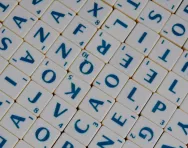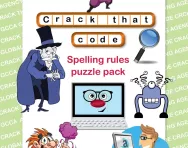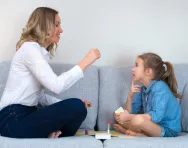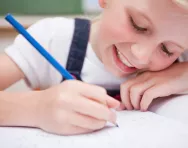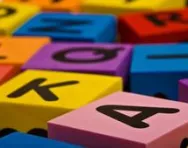Important update from TheSchoolRun
For the past 13 years, TheSchoolRun has been run by a small team of mums working from home, dedicated to providing quality educational resources to primary school parents. Unfortunately, rising supplier costs and falling revenue have made it impossible for us to continue operating, and we’ve had to make the difficult decision to close. The good news: We’ve arranged for another educational provider to take over many of our resources. These will be hosted on a new portal, where the content will be updated and expanded to support your child’s learning.
What this means for subscribers:
- Your subscription is still active, and for now, you can keep using the website as normal — just log in with your usual details to access all our articles and resources*.
- In a few months, all resources will move to the new portal. You’ll continue to have access there until your subscription ends. We’ll send you full details nearer the time.
- As a thank you for your support, we’ll also be sending you 16 primary school eBooks (worth £108.84) to download and keep.
A few changes to be aware of:
- The Learning Journey weekly email has ended, but your child’s plan will still be updated on your dashboard each Monday. Just log in to see the recommended worksheets.
- The 11+ weekly emails have now ended. We sent you all the remaining emails in the series at the end of March — please check your inbox (and spam folder) if you haven’t seen them. You can also follow the full programme here: 11+ Learning Journey.
If you have any questions, please contact us at [email protected]. Thank you for being part of our journey it’s been a privilege to support your family’s learning.
*If you need to reset your password, it will still work as usual. Please check your spam folder if the reset email doesn’t appear in your inbox.
9 strategies for learning primary school spellings

Unless you’re in a small and very lucky minority, helping your child learn their spellings probably drives you to the brink of insanity – week after week after week. It can be a thankless task, and even more so when, despite all their practice, your child still only manages to get four out of 10.
Primary schools often have their own preferred strategy for learning spellings, but there’s no guarantee that that particular method will work for your child. Fortunately, there are other ways of practising that might suit them better and help them get full marks every week.
Look, say, cover, write, check
Look, say, cover, write, check is the method used to practise spellings in most primary schools. It works because it’s a multi-sensory approach, using sight, sound and touch: research shows that the more senses a child involves in their learning, the better the outcome.
With this method, your child will start with a list of spellings written down on paper. They then go through the following steps:
- Look at the word carefully. Pay attention not just to the letters and their order, but also to the shape the word makes on the page
- Say it aloud. Say the word both as you would usually say it, and then again enunciating any silent letters, e.g. Wed – nes – day.
- Cover the word with a piece of paper or your hand
- Write the word down from memory.
- Check your answer letter by letter. If you’ve got it wrong, write it out again correctly.
Children are usually encouraged to repeat this once a day.
Download our free Look, Cover, Write and Check free blank word list template to put this technique into practice at home.
Spelling sentences
More commonly used in KS2, this involves practising spellings by writing sentences that include the words that have to be learnt. For example, if a child was given the word ‘highlight’ to learn, they might write:
‘Going to the roller disco was the highlight of my weekend.’
The benefit of writing sentences is that it doesn’t just help children learn how to spell the word, but it also reinforces the meaning and how to use it in context. Teachers sometimes make the task more challenging by asking children to write a compound or complex sentence.
Dictation
This is similar to spelling sentences, but instead of children writing their own sentences, the teacher reads out a sentence that includes the spelling word. The child has to write down either the word itself, or the whole sentence, for example:
‘A shape with four sides is called a quadrilateral. Spell 'quadrilateral'.”
This is the method used to test spelling knowledge in both the KS1 and KS2 SATs.
Spotting patterns
Often, children will be given a list of words that are connected by a certain rule, such as ‘I before E except after C.’ Making sure your child knows the rule can take a lot of the effort out of learning what might look like difficult spellings, as the pattern can be applied to most or all of the words. It is, however, important that they know any exceptions to the rule to avoid slipping up.
Listen and spell
This may seem like an old-fashioned way of learning spellings, where the word is simply read aloud and your child has to write it down. But while it may not be the most revolutionary or exciting technique, it works well for children who are auditory learners.
There are two different ways to do this:
• Saying the whole word aloud and getting your child to write it down.
• Spelling the word out letter by letter, with your child writing each letter as you say it.
You can make the task more engaging by letting your child record themselves saying the words aloud using your phone or tablet; they can then play the recording back and write the word down.

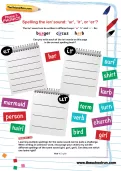
Claim FREE Spelling Resources Today
- Spelling workbooks
- Step-by-step programme
- Spelling test packs
- 100s of worksheets & games
Mnemonics
Often used for so-called tricky words (generally those that don't follow a spelling rule), a mnemonic is any sort of memory aid that helps you remember something. The most common type of mnemonic is an acrostic, where you make up a sentence where each word starts with the letters in the word to be learnt, for example:
Big elephants can always understand small elephants = ‘because’
However, mnemonics can take many forms: a visual learner, for instance, might draw a picture that helps them remember how to spell the word.
Tracing
Here, your child copies out the words that they need to learn using their best cursive handwriting. They then place a sheet of tracing paper over the top and trace the words they’ve written. This helps your child build a muscle memory of the word, and can be a useful tactic for kinaesthetic learners who learn best when they’re doing something physical.
Beat the clock
If your child is the competitive type, getting them to practise their spellings against the clock might appeal. This is as simple as it sounds: you read out the word and get your child to either write it down or spell it out aloud, and see if they can do it a bit faster each day.
It’s a useful task if your child is preparing for a spelling bee or similar timed spelling competition, but make sure that you check that they’re spelling the words correctly, especially if they’re spelling them out loud.
Word puzzles
These take a bit more preparation, but word puzzles such as crosswords, wordsearches, anagrams and Hangman are great ways to make spelling that little bit more fun. These encourage children to think carefully about the order of letters in a word. You’ll find lots of wordsearch and crossword makers like Puzzle-Maker online.

